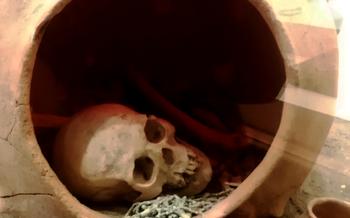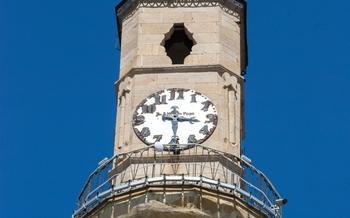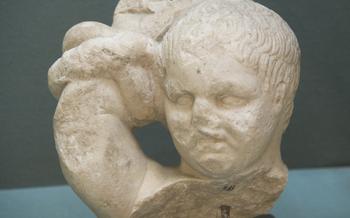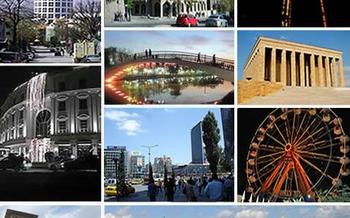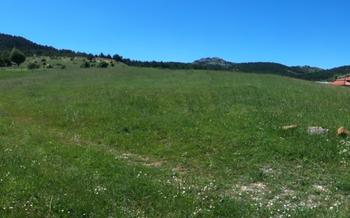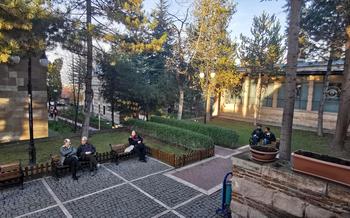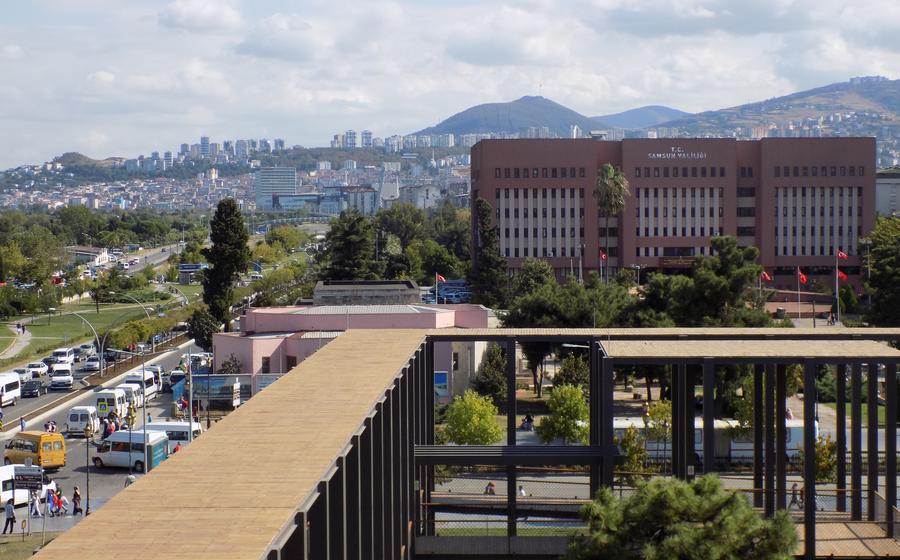
Hittite Road
- A Journey Through History: Unveiling the Hittite Road
- Planning Your Adventure: Essentials for Travelers
- Exploring Samsun: A Gateway to the Hittite Road
- Alacahöyük: Unraveling the Secrets of the Hittite Capital
- Boğazkale: In the Footsteps of the Hittite Kings
- Çorum: A Treasure Trove of Hittite Heritage
- Amasya: A City Steeped in History and Natural Beauty
- Tokat: Unveiling the Hidden Gems of the Hittite Empire
- Niksar: A Journey into the Heart of the Hittite Heartland
- Yozgat: Discovering the Ancient Hittite City of Gordion
- Sivas: A Crossroads of Civilizations
- Erzincan: A Glimpse into the Hittite-Armenian Connection
- Kayseri: A Culinary Paradise with a Hittite Twist
- Savor Hittite-Inspired Cuisine
- Explore Local Specialties
- Discover Culinary Treasures
- Tips for Food Lovers
- A Journey that Transforms: Embracing the Spirit of the Hittite Road
A Journey Through History: Unveiling the Hittite Road
The Hittite Road, a legendary ancient trade route, beckons travelers to embark on a journey through time, uncovering the mysteries of the Hittite civilization. This enigmatic empire, whose influence spanned Anatolia and beyond, left an enduring legacy that continues to captivate modern-day explorers.
Their meticulously constructed road network, stretching over 2,000 kilometers, facilitated commerce, cultural exchange, and diplomatic missions. It served as a conduit for ideas, technologies, and artistry, connecting diverse civilizations and laying the foundation for future trade routes.
The Hittites, known for their prowess in metallurgy, engineering, and administration, left behind a rich tapestry of cultural heritage. Their impressive fortifications, intricate rock reliefs, and sophisticated cuneiform script stand as testaments to their ingenuity and organizational skills.
Venturing along the Hittite Road is not merely a journey through history but an immersion into a world of ancient grandeur, where the echoes of forgotten civilizations still resonate. Prepare to be captivated by the allure of the Hittite Road as it unveils the secrets of a civilization that shaped the course of history.
Planning Your Adventure: Essentials for Travelers
Before embarking on your journey along the Hittite Road, careful planning and preparation are essential. The best time to visit is during the spring or fall, as the weather is pleasant with moderate temperatures. Pack comfortable clothing suitable for outdoor activities, sturdy hiking shoes, a hat, sunglasses, and sunscreen. Remember to bring a camera to capture the breathtaking landscapes and historical sites.
Transportation options include renting a car for the ultimate flexibility, taking advantage of the well-connected bus network, or joining a guided tour for a hassle-free experience. Several reputable tour operators offer guided tours of the Hittite Road, providing in-depth knowledge and ensuring a smooth journey.
Exploring Samsun: A Gateway to the Hittite Road
The vibrant city of Samsun serves as an ideal starting point for your journey along the Hittite Road. Immerse yourself in its rich cultural heritage by visiting the Samsun Archaeological and Ethnography Museum, housing an impressive collection of Hittite artifacts. Don't miss the iconic Onur Anıtı, a monument symbolizing Samsun's significance in the Turkish War of Independence. Explore the city's culinary scene, savoring the flavors of traditional Turkish cuisine at local restaurants. For a memorable stay, choose from a range of comfortable hotels and guesthouses catering to every budget.
Alacahöyük: Unraveling the Secrets of the Hittite Capital
Alacahöyük, a captivating archaeological site nestled in the heart of Turkey's Çorum Province, beckons travelers to embark on a journey through time, revealing the secrets of the Hittite civilization. This ancient city-state, once a vibrant center of power and culture, invites visitors to explore its rich history and marvel at its architectural wonders.
Excavations conducted at Alacahöyük have unearthed a treasure trove of artifacts, shedding light on the sophisticated culture of the Hittites. The site boasts impressive fortifications, intricate temples, and royal tombs adorned with stunning reliefs and hieroglyphic inscriptions. Among the most remarkable discoveries are the famous "Alacahöyük Sphinx," a captivating stone sculpture showcasing the fusion of Hittite and Egyptian artistic influences, and the "Golden Bull," a magnificent symbol of Hittite craftsmanship.
A visit to Alacahöyük offers a unique opportunity to immerse oneself in the daily life and rituals of the Hittites. The excavated structures provide a glimpse into their administrative, religious, and domestic practices. Visitors can wander through the remnants of the royal palace, envisioning the grandeur of Hittite rulers, and explore the temples dedicated to their revered deities. The site's museum houses a collection of artifacts that further illuminate the Hittite civilization, bringing their history and culture to life.
Alacahöyük's ongoing research and excavations continue to unveil new insights into the Hittite world. Archaeologists meticulously uncover ancient structures, decipher enigmatic inscriptions, and piece together the puzzle of this remarkable civilization. Visitors can witness firsthand the excitement of archaeological discovery and gain a deeper understanding of the Hittite legacy.
Boğazkale: In the Footsteps of the Hittite Kings
Venturing into the heart of the Hittite Empire, Boğazkale, formerly known as Hattusa, stands as a testament to the grandeur of their civilization. Immerse yourself in the ruins of this ancient capital, where the echoes of history reverberate through the very stones. Explore the remnants of the mighty city walls, marvel at the intricate carvings adorning the Lion Gate, and step into the awe-inspiring Great Temple, where the Hittite kings once communed with their deities.
Stroll along the processional roads, imagining the vibrant processions that once took place, and let your mind wander as you contemplate the daily lives of the Hittite people. Discover the secrets of their writing system by deciphering the cuneiform inscriptions that adorn the walls of the city, offering glimpses into their language, culture, and beliefs.
Uncover the mysteries of the Hittite royal court as you explore the Grand Palace, envisioning the power and opulence that once resided within its walls. Delve into the intricacies of Hittite diplomacy and statecraft as you stand in the throne room, where decisions that shaped the ancient world were made.
Boğazkale is not merely a collection of ruins but a living testament to the enduring legacy of the Hittites. As you wander through this ancient city, you will not only witness the grandeur of their civilization but also gain a profound appreciation for their contributions to history, culture, and the development of the ancient world.
Çorum: A Treasure Trove of Hittite Heritage
Çorum, a city in central Turkey, holds a significant place in the history of the Hittite civilization. Serving as a regional center during the Hittite Empire's reign, Çorum boasts a wealth of Hittite heritage, attracting history enthusiasts and archaeologists alike.
A must-visit destination for those exploring the Hittite Road is the Çorum Archaeological Museum, home to an impressive collection of Hittite artifacts unearthed from excavations in the region. From intricate sculptures and pottery to cuneiform tablets and jewelry, the museum offers a glimpse into the daily lives, religious beliefs, and artistic achievements of the Hittite people.
Venturing beyond the museum, visitors can discover numerous Hittite rock reliefs and inscriptions scattered throughout Çorum province. These remnants of the past, often carved into rock faces or boulders, provide valuable insights into Hittite history, mythology, and their interactions with neighboring civilizations.
During my visit to Çorum, I had the privilege of meeting local historians who shared their passion for Hittite culture and their dedication to preserving its legacy. Their knowledge and enthusiasm brought the ancient Hittite civilization to life, making my exploration of Çorum's Hittite heritage all the more enriching and memorable.
Amasya: A City Steeped in History and Natural Beauty
Nestled amidst the verdant valleys and towering cliffs of northern Turkey lies the captivating city of Amasya. Its unique location, where the Yeşilırmak River meanders through the city center, creates a picturesque landscape that has captivated travelers for centuries.
Amasya's rich history dates back to the Hittite period, and the city served as the capital of the Neo-Hittite kingdom of Pontus in the 6th century BC. Visitors can explore the Amasya Castle, a magnificent fortress perched atop a steep cliff, which offers breathtaking views of the city and the surrounding countryside. The castle's impressive fortifications, including its towers and ramparts, stand as a testament to the city's strategic importance throughout history.
Another must-see attraction in Amasya is the rock-cut tombs, which date back to the Hellenistic period. These elaborate tombs, carved into the sheer cliffs overlooking the river, provide a glimpse into the burial customs and artistic traditions of ancient civilizations.
Beyond its historical significance, Amasya is also renowned for its vibrant local culture and traditions. The city's narrow cobblestone streets are lined with charming shops, cafes, and restaurants, where visitors can savor delicious Turkish cuisine and immerse themselves in the warm hospitality of the locals.
For photographers, Amasya offers endless opportunities to capture stunning images. The city's unique blend of history, nature, and culture provides a picturesque backdrop for photography enthusiasts. Whether it's the golden hues of the castle at sunset, the reflections of the city lights dancing on the river, or the vibrant colors of the local markets, Amasya is a visual feast for the eyes.
Tokat: Unveiling the Hidden Gems of the Hittite Empire
Tokat, a city in northern Turkey, often overlooked by travelers, holds a significant place in Hittite history. Once a provincial center of the Hittite Empire, Tokat boasts a rich cultural heritage waiting to be explored.
Tokat Museum: Embark on a journey through time at the Tokat Museum, home to an impressive collection of Hittite artifacts. Discover intricate sculptures, pottery, and inscriptions that shed light on the daily lives and practices of the ancient Hittites.
Sulusaray Mound: Uncover the secrets of the Sulusaray Mound, an archaeological site just outside Tokat. Excavations have revealed the remains of a Hittite settlement, including fortifications, temples, and residential areas. Explore the ruins and imagine the bustling city that once stood here.
Off-the-Beaten-Path Exploration: Venture beyond the main tourist routes to discover lesser-known Hittite sites in the Tokat region. Explore ancient rock reliefs, hidden temples, and forgotten settlements that offer a glimpse into the vast reach of the Hittite Empire.
Challenges and Rewards: Exploring off-the-beaten-path Hittite sites comes with its challenges. Roads may be rough, and information can be limited. However, the rewards are immense. The tranquility of these hidden gems, the sense of discovery, and the opportunity to connect with local historians make the journey worthwhile.
Niksar: A Journey into the Heart of the Hittite Heartland
Niksar, located in the heart of the Tokat Province, holds a significant place in Hittite history. Once known as Hupisna, it served as a strategic city during the Hittite period. The ruins of the ancient Hittite city of Hupisna stand as a testament to the city's former glory. Explore the remains of its fortifications, temples, and residential areas, offering a glimpse into the lives of the Hittites who once called this place home.
One of the highlights of Niksar is the Niksar Stele, an impressive stone monument that stands as a valuable source of information about Hittite culture and history. The stele features inscriptions in both Hittite hieroglyphics and cuneiform, providing insights into the religious beliefs, political alliances, and military campaigns of the Hittite rulers.
Niksar is not only about ancient ruins; it's also a vibrant city with a rich cultural heritage. Take the time to explore the local museums, which house a collection of artifacts and exhibits that shed light on the region's past. Engage with the friendly locals, who are proud of their city's history and eager to share their knowledge and stories with visitors.
As you wander through the streets of Niksar, keep an eye out for the many historical landmarks and monuments that dot the city. From mosques and churches to ancient bridges and fortifications, each structure tells a story of the city's diverse past. Niksar is a treasure trove of Hittite history, waiting to be discovered and explored.
Yozgat: Discovering the Ancient Hittite City of Gordion
Yozgat, located in central Turkey, boasts a rich history dating back to the Hittite Empire. While the city itself might not have been a major Hittite center, its surrounding region played a significant role in the empire's history.
One of the most prominent Hittite sites in Yozgat is Gordion, an ancient city that served as the capital of Phrygia, a kingdom that succeeded the Hittites in the region. The Gordion Archaeological Museum houses a collection of artifacts unearthed from the site, offering insights into the Phrygian culture and their Hittite predecessors.
The most famous attraction in Gordion is undoubtedly the Gordion Knot, a legendary knot that, according to Greek mythology, could only be untied by the future ruler of Asia. While the original knot has been lost to time, visitors can still admire a replica on display at the museum.
Another notable site in Yozgat is the Midas Mound, located near the village of Yazılıkaya. The mound is believed to be the burial site of King Midas, the legendary Phrygian ruler known for his golden touch. Excavations at the site have revealed a large tumulus, or burial mound, as well as a number of artifacts, including gold jewelry and pottery.
Visiting Yozgat offers travelers a chance to delve into the history of the Hittites and Phrygians, two powerful civilizations that shaped the ancient world. The city's rich cultural heritage and stunning landscapes make it a worthwhile destination for any history enthusiast.
Sivas: A Crossroads of Civilizations
Sivas, a city nestled in the heart of Anatolia, boasts a rich tapestry of history and culture, serving as a crossroads for civilizations throughout the ages. Its strategic location has attracted various empires, leaving behind a legacy of architectural wonders and cultural influences.
Historical Significance: Sivas's history dates back to the Hittite period, where it served as an important regional center. The city's strategic location on the Hittite Road facilitated trade and cultural exchange, contributing to its prosperity. Later, Sivas fell under the rule of various civilizations, including the Romans, Byzantines, Seljuks, and Ottomans, each leaving their unique mark on the city's landscape.
Exploring Sivas: Delve into the depths of Sivas's history by visiting the Sivas Castle, a magnificent fortress that has stood witness to the city's many transformations. The Great Mosque, with its intricate tilework and elegant architecture, offers a glimpse into the city's Islamic heritage.
Hittite Legacy: Uncover the Hittite presence in Sivas by exploring the city's museums and archaeological sites. The Sivas Archaeological Museum houses a collection of artifacts that shed light on the Hittite civilization, including impressive rock reliefs and inscriptions. Discover the remnants of Hittite settlements and fortifications in the surrounding areas, providing tangible evidence of their enduring legacy.
Transition from Hittite to Roman Rule: Sivas's transition from Hittite to Roman rule is a fascinating chapter in its history. The city's strategic location made it a crucial outpost for the Romans, who constructed roads, bridges, and aqueducts to facilitate trade and communication. Explore the remnants of Roman rule, such as the ruins of Roman baths and theaters, which offer a glimpse into the daily life of the Roman period.
Anecdotes: During my visit to Sivas, I had the privilege of meeting a local historian who shared captivating stories about the city's past. He described how Sivas served as a melting pot of cultures, where Hittite, Roman, Byzantine, and Ottoman influences intertwined, creating a unique blend of traditions and customs.
Conclusion: Sivas, a city steeped in history, invites travelers to embark on a journey through time, discovering the remnants of the Hittite civilization and the influences of subsequent empires. Its rich heritage, cultural landmarks, and warm hospitality make it a must-visit destination for history enthusiasts and travelers seeking an authentic Anatolian experience.
Erzincan: A Glimpse into the Hittite-Armenian Connection
Erzincan, a city nestled in eastern Turkey, holds a unique place in the tapestry of Hittite history. Strategically located at the crossroads of Anatolia and the Caucasus, Erzincan witnessed the convergence of different cultures and civilizations throughout the ages. The Hittites, Armenians, and Romans all left their indelible mark on this region, creating a rich and diverse cultural heritage.
Visiting the Erzincan Museum is a must for those seeking to delve into the region's past. Here, you can admire a collection of artifacts that tell the story of Erzincan's inhabitants from prehistoric times to the present day. Among the highlights are Hittite rock reliefs and inscriptions, providing glimpses into the lives and beliefs of this ancient civilization.
Erzincan is also home to the Üçlerkayası Hittite rock reliefs, located just outside the city. These impressive carvings, dating back to the 8th century BC, depict scenes of Hittite deities and rulers. The site offers a unique opportunity to witness the artistic and religious expressions of the Hittites in their natural setting.
In addition to its Hittite heritage, Erzincan is renowned for its Armenian cultural legacy. The city and its surroundings are dotted with Armenian churches and monasteries, testaments to the significant Armenian presence in the region. These sacred sites, with their intricate architecture and beautiful frescoes, provide a glimpse into the rich spiritual traditions of the Armenian people.
Exploring Erzincan is like embarking on a journey through time, where the echoes of ancient civilizations intertwine with the vibrant culture of today. The city's unique blend of Hittite, Armenian, and Turkish influences creates a fascinating tapestry that is sure to captivate any traveler seeking to unravel the mysteries of Anatolia's past.
Kayseri: A Culinary Paradise with a Hittite Twist
Kayseri, a city steeped in history and culture, offers a tantalizing culinary experience that seamlessly blends the flavors of the past with the tastes of the present. As you embark on your Hittite Road adventure, be sure to indulge in the delectable dishes that have made Kayseri a renowned culinary destination.
Savor Hittite-Inspired Cuisine
Kayseri's cuisine proudly showcases the culinary legacy of the Hittites, who ruled this region centuries ago. One must-try dish is the famous "mantı," delicate dumplings stuffed with minced meat and topped with a yogurt-based sauce. This dish is believed to have originated during the Hittite period and remains a local favorite to this day.
Explore Local Specialties
Beyond Hittite-inspired cuisine, Kayseri boasts a diverse range of local specialties that reflect the city's rich cultural heritage. "Pastırma," a cured and air-dried beef delicacy, is a culinary gem that has earned Kayseri international recognition. "Sucuk," a spicy sausage made from beef or lamb, is another local delicacy not to be missed.
Discover Culinary Treasures
As you wander through Kayseri's vibrant markets, be sure to sample the freshly baked "pide," a flatbread topped with various savory fillings. And for a sweet treat, indulge in the city's famous "güllaç," a traditional Turkish dessert made from layers of thin dough soaked in milk and topped with pomegranate seeds and nuts.
Tips for Food Lovers
To fully immerse yourself in Kayseri's culinary delights, venture beyond the tourist hotspots and seek out the hidden gems frequented by locals. Engage with friendly vendors and shopkeepers, who will gladly share their knowledge about local ingredients and cooking techniques. And remember, the best way to experience Kayseri's culinary scene is to embrace the spirit of adventure and let your taste buds guide you.
A Journey that Transforms: Embracing the Spirit of the Hittite Road
Venturing along the Hittite Road is not merely a journey through history; it's a transformative experience that awakens a deep appreciation for the enduring legacy of ancient civilizations. As you traverse the landscapes once tread by the Hittites, you'll find yourself immersed in a realm where the past and present intertwine, where the stories etched in stone and whispered by the wind come alive.
This journey is not just about discovering ancient ruins and marveling at their grandeur; it's about connecting with the spirit of a civilization that thrived millennia ago. It's about understanding their beliefs, their way of life, and their contributions to the tapestry of human history. Every step you take along the Hittite Road is a step towards fostering a deeper sense of cultural understanding and appreciation.
Embrace the Hittite Road with an open heart and mind, and you'll return home not just with memories but with a newfound perspective on the interconnectedness of civilizations and the enduring power of human legacy. Let the Hittites be your guides as you embark on this extraordinary adventure, and allow their stories to inspire you to create your own.

